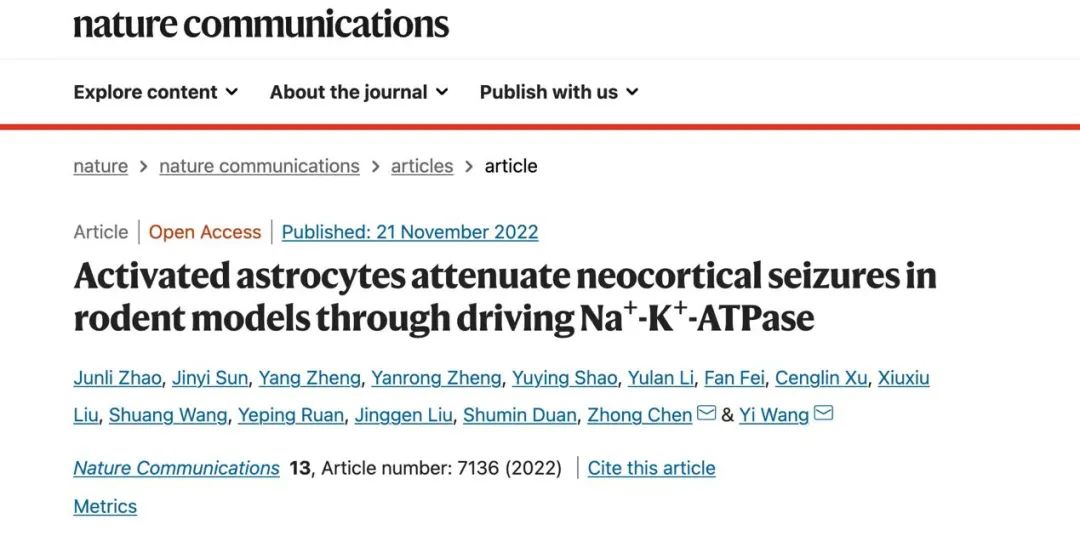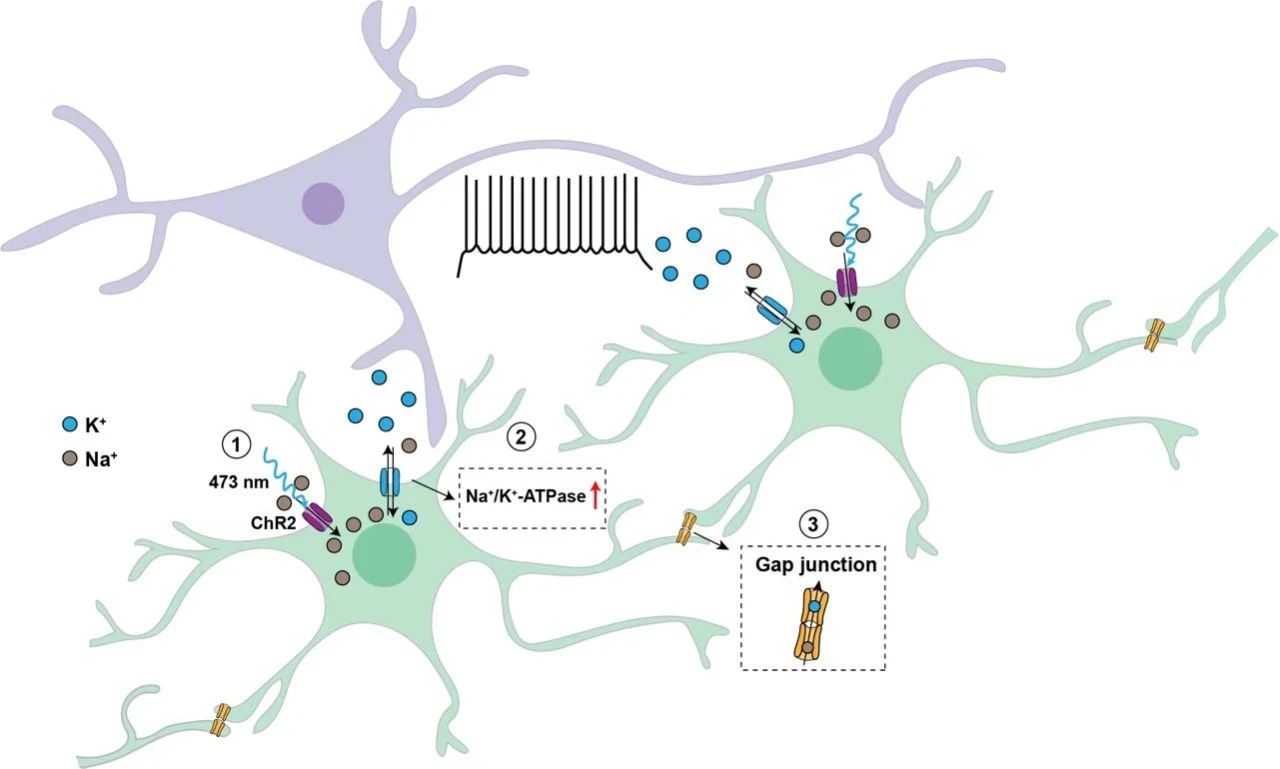On 21 November 2022, the research team led by Prof. Chen Zhong & Researcher Wang Yi made a breakthrough in astrocytes. The research result entitled Activated astrocytes attenuate neocortical seizures in rodent models through driving Na+-K+-ATPase (Nat Commun, 2022b) was published in Nature Communications, an internationally renowned journal. The first author is Dr Zhao Junli and Sun Jinyi, a master's student. The co-corresponding authors are Chen Zhong and Wang Yi.

The research further revealed the mechanism of astrocyte involvement in epileptic seizures. Besides, it found that the specific activation of Na+-K+-ATPase function in cortical astrocytes by optogenetic means could achieve the effect of treating neocortical epilepsy, which provided new ideas and a potential target for the treatment of intractable epilepsy.

In this research, the researchers used photostimulation of ChR2-expressing astrocytes to the motor cortex of mice/rats. They found for the first time that selective stimulation of astrocytes with optogenetics could effectively inhibit the occurrence and progression of cortical epilepsy. Importantly, compared with the general inhibition of neurons, optogenetic stimulation of astrocytes exhibits anti-seizure effects with several advantages:
I. Wide therapeutic window, wherein astrocyte stimulation by optogenetics in seizure focus produces an anti-seizure effect both in the early and late phases of neocortical seizure.
II. Large-space efficacy, as astrocyte stimulation, even in the remote cortical region, can effectively attenuate the occurrence of GS.
III. The anti-epileptic effect also has a minimal impact on normal physiological functions.

Mechanistically, the research foundthat the extensive network formed by the gap junctions between astrocytes could further exert an anti-persistent and widespread anti-epileptic effect.
 International Relations Office
International Relations Office International Education College
International Education College








